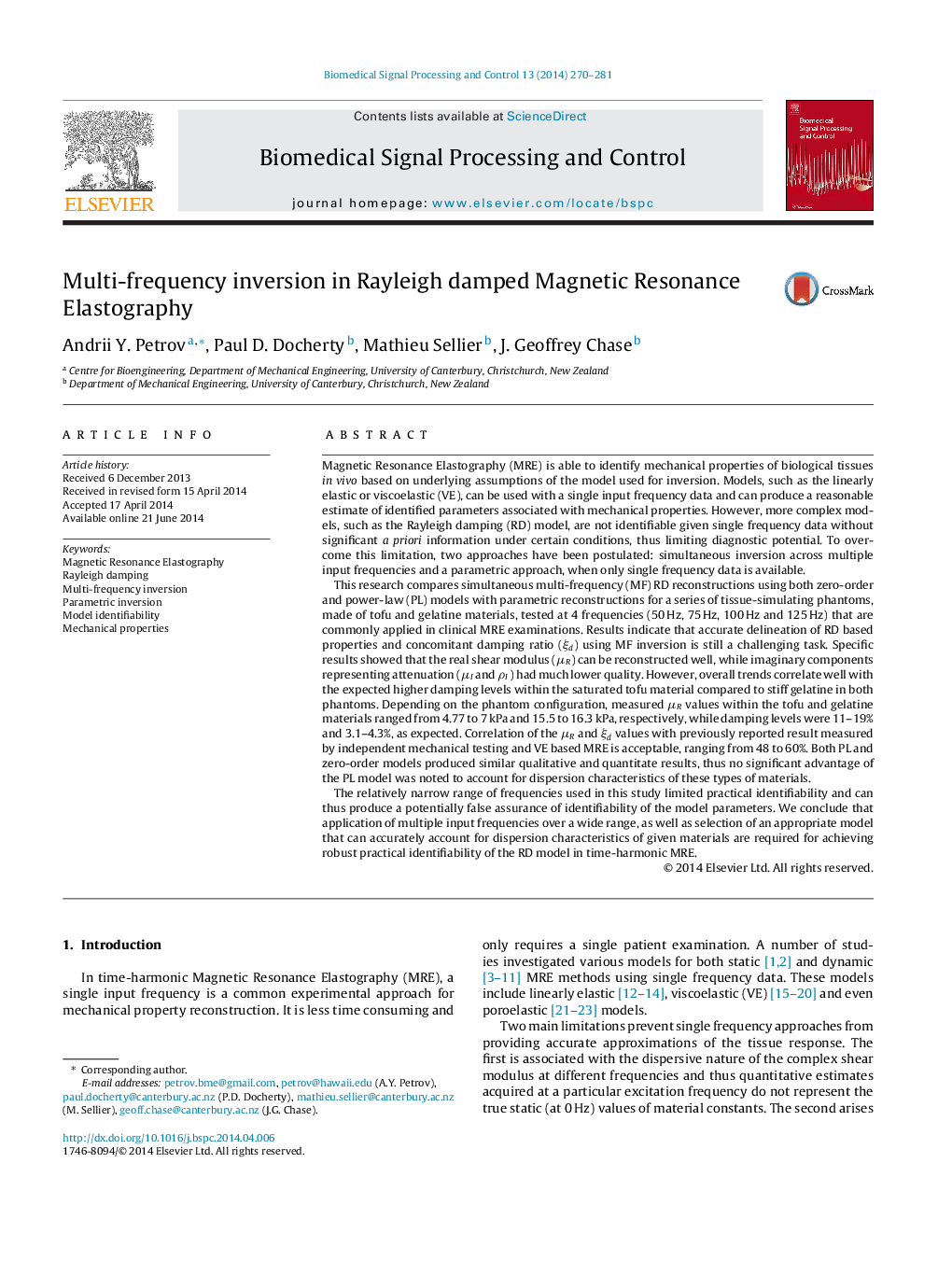| کد مقاله | کد نشریه | سال انتشار | مقاله انگلیسی | نسخه تمام متن |
|---|---|---|---|---|
| 562594 | 1451667 | 2014 | 12 صفحه PDF | دانلود رایگان |
• Rayleigh damping (RD) model is structurally non-identifiable at a single frequency data without extensive a priori information.
• We propose two alternative approaches to overcome non-identifiability issue of the RD model.
• We compared simultaneous multi-frequency (MF) reconstructions with parametric reconstructions for a series of phantoms.
• Results indicate that accurate delineation of RD based properties using MF inversion is still a challenging task.
• We conclude that multiple input frequencies over a wide range are required for achieving robust practical identifiability.
Magnetic Resonance Elastography (MRE) is able to identify mechanical properties of biological tissues in vivo based on underlying assumptions of the model used for inversion. Models, such as the linearly elastic or viscoelastic (VE), can be used with a single input frequency data and can produce a reasonable estimate of identified parameters associated with mechanical properties. However, more complex models, such as the Rayleigh damping (RD) model, are not identifiable given single frequency data without significant a priori information under certain conditions, thus limiting diagnostic potential. To overcome this limitation, two approaches have been postulated: simultaneous inversion across multiple input frequencies and a parametric approach, when only single frequency data is available.This research compares simultaneous multi-frequency (MF) RD reconstructions using both zero-order and power-law (PL) models with parametric reconstructions for a series of tissue-simulating phantoms, made of tofu and gelatine materials, tested at 4 frequencies (50 Hz, 75 Hz, 100 Hz and 125 Hz) that are commonly applied in clinical MRE examinations. Results indicate that accurate delineation of RD based properties and concomitant damping ratio (ξd) using MF inversion is still a challenging task. Specific results showed that the real shear modulus (μR) can be reconstructed well, while imaginary components representing attenuation (μI and ρI ) had much lower quality. However, overall trends correlate well with the expected higher damping levels within the saturated tofu material compared to stiff gelatine in both phantoms. Depending on the phantom configuration, measured μR values within the tofu and gelatine materials ranged from 4.77 to 7 kPa and 15.5 to 16.3 kPa, respectively, while damping levels were 11–19% and 3.1–4.3%, as expected. Correlation of the μR and ξd values with previously reported result measured by independent mechanical testing and VE based MRE is acceptable, ranging from 48 to 60%. Both PL and zero-order models produced similar qualitative and quantitate results, thus no significant advantage of the PL model was noted to account for dispersion characteristics of these types of materials.The relatively narrow range of frequencies used in this study limited practical identifiability and can thus produce a potentially false assurance of identifiability of the model parameters. We conclude that application of multiple input frequencies over a wide range, as well as selection of an appropriate model that can accurately account for dispersion characteristics of given materials are required for achieving robust practical identifiability of the RD model in time-harmonic MRE.
Journal: Biomedical Signal Processing and Control - Volume 13, September 2014, Pages 270–281
